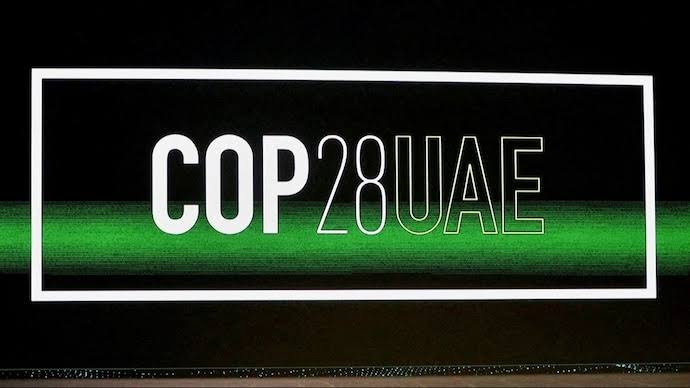By Sonny Atumah
The 28th session of the Conference of the Parties (COP28) of the United Nations Framework Convention on Climate Change (UNFCCC), convenes from Thursday, 30th November to Tuesday, 12th December 2023 at the Expo City, Dubai, the United Arab Emirates (UAE). It is indeed a back-to-back hosting from Egypt in 2022 to the UAE in 2023, for the Arab Group of 22 countries of the Middle East and Northern Africa (MENA) geopolitical region.
The COP is an annual meeting where United Nations member states convene to assess progress in dealing with climate change and make plans for climate action within the guidelines of the UNFCCC. The COP1 was in Berlin, Germany, in 1995, and the the last, COP27 was in Sharm El Sheikh, Egypt in 2022. Expected at the COP28 are 70,000 participants, including heads of state, government officials, industry leaders, academics, and representatives from civil society organizations and the media.
Dubbed the Conference of firsts, the President-Designate of COP28 UAE, Dr. Sultan Al Jabber, said the first Global Stocktake (GST) will feature. The GST is a collective initiative which Parties and non-Party stakeholders to the Paris Agreement, are expected to undertake in every five years, an assessment of the global progress of the Paris Agreement. For the first time, the Group of 20 (G20) environment and climate Ministers meeting, held in Chennai, India, last July, emphasized the importance of the first Global Stocktake.
COP28 will be the first to feature an expanded stakeholder involvement, including high- emissions sectors and private sector oil and gas organisations. Faith leaders for the first time are to perform crucial roles in advancing the climate agenda, with the first Faith Pavilion to be hosted at the COP28. Last month, Dr. Al Jaber, met with Pope Francis in Rome, to discuss the crucial role of faith leaders and expressed gratitude to the Vatican for its climate action advocacy. Global warming dynamics is manifesting in various regions in the lives of generations, old and young.
According to Climate Trade, each year more than 30 giga (billion) tons of Carbon Dioxide (CO2) are released into the Earth’s atmosphere. This is the main source of the greenhouse gases that contribute to climate change. The largest part of these gases comes from the use of fossil fuels, energy generators through non-renewable channels and polluting human activities. From the 2023 Statista Carbon Dioxide Emissions worldwide, the top five emitters of global greenhouse gas emissions in 2021 are China (30.9%), the United States of America (13.5%), India (7.3%), the Russian Federation (4.7%) and Japan (2.9%), accounting for about 60 percent of global emissions.
UNEP reports indicate that the Group of 20 are responsible for about 80 percent of GHG emissions. The United Nations believes that Climate Change is the defining issue of our time, from shifting weather patterns that produce extreme heatwave, greenhouse gas emissions to rising sea levels that increase the risk of catastrophic flooding. Without drastic action today, adapting to these impacts in the future will be more difficult and costly. The effects of urbanization and climate change are converging in dangerous ways.
The combined emissions of the richest one percent of the global population are larger than the combined emissions of the poorest 50 percent. The warmest temperature in recorded history since 1850 was in July 2023 with temperature exceeding 50 °C in some parts of the United States and Northwest China on the 16th of July 2023. Several heat deaths were confirmed in the US, with over 200 people dead in Mexico. Spain, Italy, Greece, Cyprus, Algeria, and China also reported heat deaths, as well as a large number hospitalised due to heat related illnesses.
Greenland holds enough ice to raise global sea levels by 7 metres if it were all to melt. The sheet currently loses around 270 gigatons of ice each year, and contributes a substantial fraction of the current global sea-level rise annually. For over thirty years, the world has been in an annual rundown of issues of temperature rise due to dangerous emissions, resources depletion, deforestation and other phenomena contributing to climate change. Global response to climate change began in the Rio Conventions in Brazil, 1992, with the adoption of the UNFCCC.
The UNFCCC sets out the basic legal framework and principles to stabilise atmospheric concentrations of greenhouse gases (GHGs) that interfere with the climate system. Greenhouse gases includ- ing carbon dioxide (CO2), methane, and sulfur dioxide, are naturally occurring gases, that trap heat on Earth for a clement atmospheric temperature. More greenhouse gases in the atmosphere means a warmer planet, mostly from high carbon-emitting fossil fuels as coal and oil. The COP3 held in Kyoto, Japan in 1997, and adopted the first international treaty on controlling and reducing greenhouse gases.
The Kyoto Protocol was an agreement that mandated industrialised nations to cut their greenhouse gas emissions. It mandated that 37 industrialised nations and the European Community cut their greenhouse gas emissions by an average of 5 per cent below 1990 levels, and established a system to monitor countries’ progress. Apparently, the Kyoto Protocol could not effectively address the flow of global emissions because it could not equate emissions reductions with economic opportunity and some countries grew to view mitigation as a costly penalty.
It did not compel developing countries, including major carbon emitters China and India, to take action. The United States which influenced major elements of the final agreement, including the flexibility mechanisms signed the agreement in 1998 but never ratified it and subsequently, withdrew its signature in 2001. It is not in doubt that the Kyoto Protocol’s failure, led to its replacement with the Paris Agreement, adopted in the 2015 COP21.
While the Kyoto Protocol required only developed countries to reduce emissions, the Paris Agreement recognized that climate change is a shared problem and called on all countries to set emissions targets. The accord was a global long-term temperature goal of clawing back global average temperature to well below 2 °C more than the benchmark set before the Industrial Revolution and to pursue efforts to limit the temperature increase to 1.5 °C.
The goal was to achieve a balance after 2050 between atmospheric inputs of greenhouse gases by emission sources (such as power plants and engines that burn fossil fuels for energy) and removal into sinks (forests, oceans, and soil, which could be combined with technologies to extract and isolate carbon dioxide from power plants). More greenhouse gases mostly from high carbon emitting fossil fuels, in the atmosphere, means a warmer planet. Many countries especially the high carbon emitters participate in the global climate conferences without genuine commitment to action.
Each country is expected to track, record, and report their carbon emissions as well as their efforts to reduce and offset them every five years. But setting target for implementation of commitments made, has become an issue of global politics geopolitics. Commitments for implementation made by governments to date, fall short of what is required to deal with climate change. International coordination for the Nationally Determined Contributions (NDCs), which countries set targets for mitigating greenhouse gas emissions that cause climate change and for adapting to climate impacts, for the growing future of the eight billion people on earth is defective.
Effective compliance mechanism in the Paris Agreement, is limited to promotion of compliance without an enforcement component.
Sir Sonny Atumah, a Journalist and Environmental Scientist, writes from Abuja



